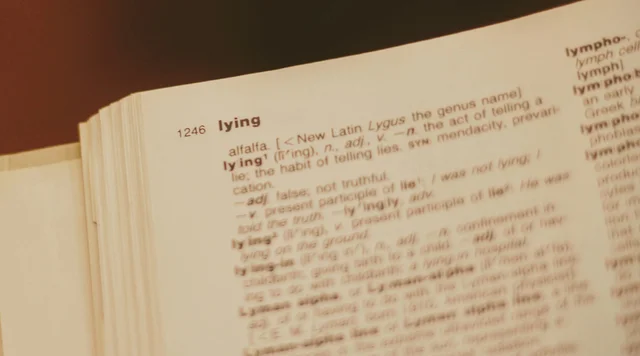
Declarations are commonplace in federal court litigation. They are submitted by attorneys, by experts, and by parties or their agents. Their purposes range from simply listing exhibits to establishing critical facts. But what language is required for an unsworn declaration? And are declarations always necessary in D. Del.?
Unsworn Declarations In General
The vast majority of declarations submitted in federal court litigation are actually "unsworn declarations" which, by statute, a litigant may submit in place of a sworn declaration or affidavit.
Don't Forget the Required Language
In particular, 28 U.S.C. § 1746 provides that where "any matter is required or permitted to be supported, evidenced, established, or proved" by a sworn affidavit or declaration, it may instead be supported, evidenced, established, or proved by an unsworn declaration, provided certain language is used.
That language is:
I declare (or certify, verify, or state) under penalty of perjury under the laws of the United States of America that the foregoing is true and correct. Executed on (date).
(Signature)
Note that the language in italics ("under the laws of the United States of America") is needed only if the declarant is outside the United States.
While declarations often include additional language about the declarant's age, personal knowledge, or soundness of mind, none of that is required by the statute (though as noted below it may be required in some contexts).
What Happens If a Party Forgets to Include the Required Language? Is It Worth Moving to Strike?
If the § 1746 language is missing, the effectiveness of the declaration as a substitute for a sworn document may be called into doubt. Although the statute provides some leeway (it requires that the declaration be made in "substantially" the form above), it is best to stick to the precise recitation to avoid having the declaration challenged or disregarded altogether.
That said, when evaluating whether to move to strike an opponent's flawed declaration, keep in mind that the Court often considers declarations with imperfect § 1746 language. See, e.g., Toshiba Samsung Storage Tech. Korea Corp. v. LG Elecs., Inc., C.A. No. 15-691-LPS-CJB, 2016 U.S. Dist. LEXIS 132901, at *47 n.9 (D. Del. Sep. 20, 2016) (declaration signed outside the U.S. that omitted the required language but included the case caption was "substantially compliant"); Godo Kaisha IP Bridge 1 v. TCL Commun. Tech. Holdings Ltd., C.A. No. 15-634-SLR-SRF, 2016 U.S. Dist. LEXIS 109010, at *27 (D. Del. Aug. 17, 2016) (declining to exclude plaintiff's defective declaration at motion to dismiss stage); Integra LifeSciences Corp. v. HyperBranch Med. Tech., Inc., C.A. No. 15-819-LPS-CJB, 2016 U.S. Dist. LEXIS 124152, at *96 (D. Del. Aug. 12, 2016) (signing "under penalty of perjury" enough).
Further, even if a declaration lacks the § 1746 language entirely, the Court may well permit the party to simply submit a new declaration with the required language.
In other words, think carefully before spending time and money on a motion to strike that is likely to fail and that the other side may easily resolve.
Transmittal Declarations
Perhaps the most common type of declaration in federal court litigation is the transmittal declaration, by which the declarant (typically an attorney) declares that exhibits or other materials attached to the declaration are "true and correct copies," or something along those lines.
Are transmittal declarations required?
It is not unusual to see briefs that simply attach the exhibits to the brief, in particular where the briefs do not have a large number of exhibits.
The D. Del. Local Rules do not discuss transmittal declarations. They do, however, discuss the submission of exhibits in an appendix. See D. Del. LR 7.1.2 (a) ("An appendix may be filed with any brief."); LR 7.1.3(a)(3) (page numbering of appendices), (d) (contents of appendices), (e) (joint appendices). Some judges require appendices in connection with certain types of briefing (claim construction briefing for example).
But the judges also recognize that transmittal declarations may be used. For example, Judge Connolly's form scheduling order refers to declarations "setting forth facts and/or authenticating exhibits." And, in practice, transmittal declarations are fairly common, especially in high-stakes patent cases where clients may be less cost sensitive and more risk averse.
Why use a transmittal declaration, as opposed to an appendix, or nothing at all?
As Judge Connolly's form order suggests, if the authenticity or provenance of the exhibits is not apparent, and if the declarant can address problematic gaps, it may make sense to use a transmittal declaration. For example, in summary judgment briefing, where the Court is to render a decision based on admissible evidence, the declarant can try to lay a foundation for admissibility for important attached documents.
However, where the purpose is simply to convey documents and not necessarily to authenticate them, it may be better to use an appendix or just to attach the exhibits directly to a brief. This is especially true where the declarant may not be able to confirm that the documents attached to the declaration are true and correct copies of the originals (where an exhibit was produced in the case by another party, for example).
Substantive Declarations
Declarations may be used to establish facts in support of, or opposition to, motions. Substantive declarations may be submitted by party representatives or experts (discussed in more detail below), and in some instances, attorneys.
Parties may submit unsworn declarations in connection with summary judgment. Fed. R. Civ. P. 56(c)(4) permits the use of declarations, and requires that they "must be made on personal knowledge, set out facts that would be admissible in evidence, and show that the affiant or declarant is competent to testify on the matters stated."
So in this context, the declarant must address personal knowledge and competence. However, as noted above, language to that effect sometimes creeps into declarations submitted in other contexts, where it may be unnecessary.
While admissibility is not necessarily a requirement for declarations outside the summary judgment context, it makes sense to address or at least consider admissibility, because in all likelihood the judge will.
Finally, don't forget about the sham affidavit doctrine, under which "a party may not create a material issue of fact to defeat summary judgment by filing an affidavit disputing his or her own sworn testimony without demonstrating a plausible explanation for the conflict." Quest Integrity USA, LLC v. Cokebusters USA Inc., 924 F.3d 1220, 1232 (Fed. Cir. 2019) (quotation marks and citation omitted).
Expert Declarations
Expert declarations are really just a subset of substantive declaration, but they are subject to some unique concerns. Because expert disclosures are governed by their own set of rules that require detailed disclosures of an expert's opinions and underlying facts (see, e.g., Fed. R. Civ. P. 26(a)(2)), use of expert declarations, especially after an expert has submitted a report, can result in disputes about the scope of permissible testimony.
Judges Stark and Noreika attempt to head off these types of disputes by making parties choose (when submitting their proposed scheduling order) whether they will permit experts to supplement their reports with declarations in connection with motion practice. If parties choose not to permit supplementation, it is wise to include the § 1746 unsworn declaration language (referred to above) in the report, to permit the use of the report itself as a declaration. Otherwise there may not be a mechanism to admit the expert's testimony in the summary judgment context.
If you enjoyed this post, consider subscribing to receive free e-mail updates about new posts.






